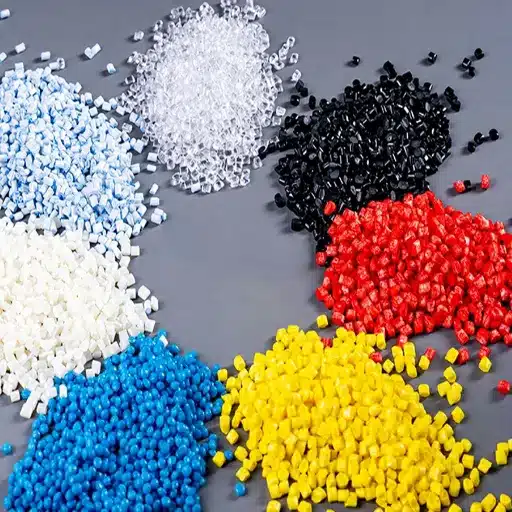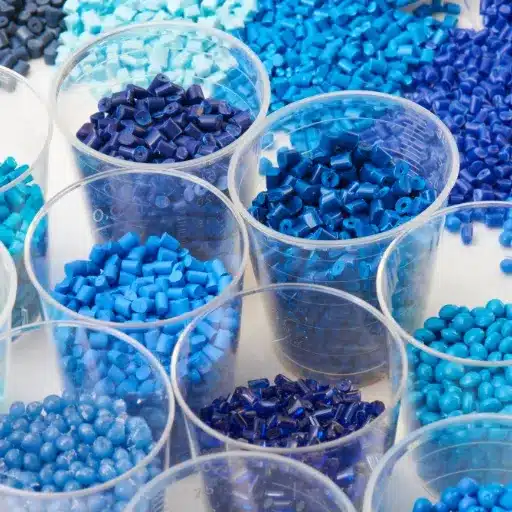PPO is notable for its high dimensional stability, thermal expansion, and electrical insulating properties. These traits make Polyphenylene Oxide (PPO) an exceptional thermoplastic and hydrophilic material. While these features are of great importance, another attribute of this material worth mentioning is its hydrophilic tail. This feature is crucial because it enables materials that utilize PPO to expand their applications across various industries. In this article, we provide a detailed account of the preparation processes and characterization techniques used on PPO plastics, with a particular focus on methods for improving their hydrophilic features and performance.
What is polyphenylene oxide, and what is its characterization?
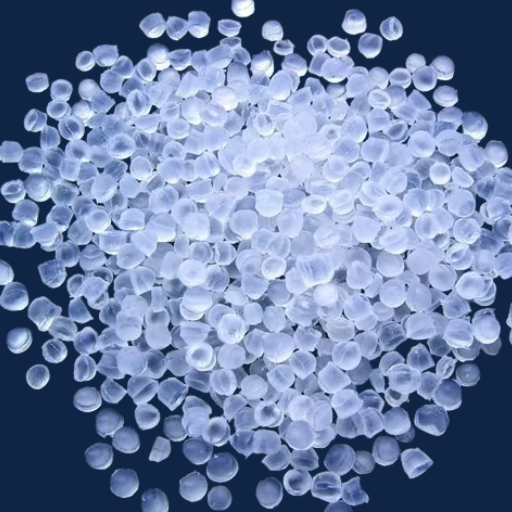
Polyphenylene prodoxime lays claim to being a premier thermoplastic, exhibiting enhanced mechanical properties while showcasing superior thermal stability, moisture absorption, glass transition temperature, and a dielectric constant. PPO’s frost resistance and chemical corrosion resistance further enhance its value in dielectric insulator markets, while limiting its potential applications to meet the needs of the electrical industry. Polyphenylene’s ether repeating backbone on the foramtion elevates its value alongside dimensional consistency.
Overview of polyphenylene oxide and its properties
It’s not its unparalleled thermal and mechanical properties that make polyphenylene oxide stand out; its corrosion resistance sets it apart from others, highlighting the virtue of versatility in its vast array of engineering applications. Thermoresistant polyphenylene shackles, like those used in pumps, blended with styrofoam counters pose husbandry risks due to expanding hydroabsorption requirements. Blends of polystyrene result in polishing processability while tailoring the suitable benefits required to enhance advanced tech fields, extending accuracy and resistance while withstanding corrosive heat.
Moreover, the development of polymer engineering has improved PPO’s compatibility with reinforced fibers and fillers, as well as its mechanical properties and functionality in high-stress environments. Water absorption and low flammability also make PPO a valued material for automotive parts, electrical connectors, and structural components in aerospace and industrial machinery. These properties illustrate the multifunctionality of PPO and identify it as an essential ingredient in engineering applications that require extreme conditions.
Methods of characterization for PPO plastics
The characterization of Polyphenylene Oxide (PPO) plastics involves multiple analytical techniques designed to study the structure, thermal, and mechanical properties of the plastic, ensuring its reliability in meeting state-of-the-art engineering requirements. One of the techniques includes Fourier Transform Infrared Spectroscopy (FTIR), which determines the presence of specific functional groups and chemical bonds within the PPO structure, thereby helping to understand its molecular structure. The glass transition temperature (Tg) and melting point, as well as pyrolytic decomposition, are some of the thermal properties measured by Differential Scanning Calorimetry (DSC), which are essential for applications at different temperatures.
Also, Thermogravimetric Analysis (TGA) is performed to assess the material’s thermal stability and decomposition properties under varying conditions. Dynamic Mechanical Analysis (DMA) evaluates the storage and loss moduli, which quantify the material’s viscoelasticity and govern its mechanical behavior when subjected to a load. Regarding structural analysis, Scanning Electron Microscopy (SEM) and Transmission Electron Microscopy (TEM) are used to obtain high-resolution images of the polymer’s morphology and any structural phase separations.
How does hydrophilic behavior affect plastic applications?
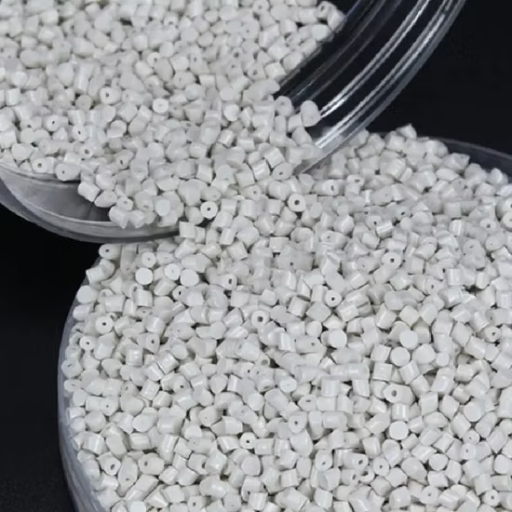
The hydrophilic characteristics of plastics affect their ability to absorb moisture from the environment, which can change their physical properties and performance in various applications. Moisture absorption usually decreases the material’s mechanical strength, electrical insulation properties, and dimensional stability. For example, plastics used in electronics need to have low hydrophilicity because high moisture can lead to electrical conductivity problems. Likewise, for structural applications, excessive water absorption leads to swelling and deformation, thus compromising durability. Managing materials with hydrophilic propensities is essential for functionality and longevity in moisture-dominated environments.
Defining hydrophilic and hydrophobic properties
Hydrophilic properties refer to a material or molecule’s tendency to form bonds with water. This trait is attributed to their ability to attract and interact with water molecules. Generally, hydrophilic substances exhibit polar functional groups, such as hydroxyl (-OH) and carboxyl (-COOH), that bond with water. Additionally, it can be measured using contact angle analysis, with lower angles indicating higher strength of water affinity.
On the other hand, materials with a propensity to repel water are referred to as having hydrophobic properties. These materials are often nonpolar due to the presence of nonpolar groups, such as methyl (-CH3) or long hydrocarbon chains, which inhibit interaction with water molecules. Having an angle greater than 90 degrees would indicate hydrophobicity, which means it repels water.
Applications of hydrophilic PPO in various industries
Hydrophilic PPO possesses unique characteristics, including its water-attracting nature, mechanical strength, and high thermal stability, which make it play a vital role in numerous industrial applications. One example is in membrane technologies for water purification and desalination. Hydrophilic PPO plays a crucial role in enhancing water permeability and mitigating fouling, making it indispensable in efficient and durable filtration systems.
In biomedical devices, PPO is applied in coatings to enhance biocompatibility and reduce friction. Catheters, stents, and surgical tools significantly improve with these properties as they boost functional capability and patient care.
PPO’s hydrophilic characteristics further assist in the electronics industry. It enhances the durability and reliability of components, such as circuit boards and electronic casings, by using advanced coatings and adhesive formulations for stable performance in humid environments.
This material is also essential in the automotive and aerospace industries for manufacturing lightweight yet strong parts. While maintaining high-temperature and environmental stress resistance, hydrophilic PPO can be tailored for fuel-efficient configurations.
Impact of water absorption on physical properties
The absorption of water significantly impacts the physical characteristics of polymers, including Polyphenylene Oxide (PPO). Hydrophilic PPO is known to undergo significant changes in the presence of moisture, which affects its dimensional accuracy, tensile strength, and dielectric properties. A higher water content carries the risk of swelling, which can lead to slight dimensional changes that may jeopardize tight tolerances in precision engineering. Furthermore, moisture sorbed from the atmosphere serves as a plasticizer within the polymer network, weakening the mechanical strength and stiffness of the polymer. The dielectric properties of the polymer may also be adversely affected because the absorbed water diminishes the dielectric strength of the polymer, resulting in a severe loss of insulation properties, especially in electronic or high-voltage environments. These interactions need to be understood in the context of engineering designs that take into account environmental factors such as humidity or submersion. The selection of materials, along with surface treatments, coatings, or other methods, can help eliminate the negative consequences, thus ensuring performance dependability in various operating environments.
What are the methods for the preparation and characterization of PPO?
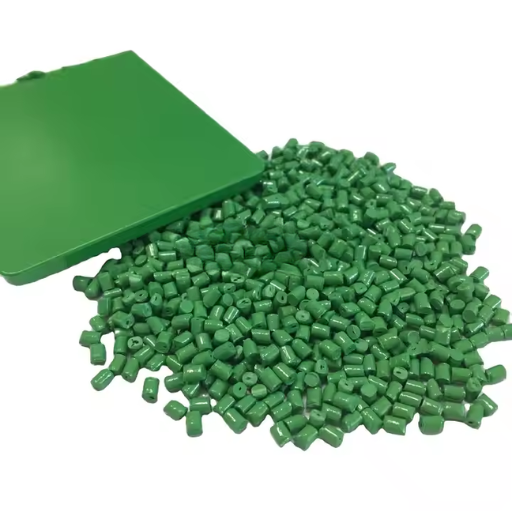
Polyphenylene oxide (PPO) is typically prepared through oxidative polymerization of 2,6-dimethylphenol using a copper-based catalyst system. This process ensures high molecular weight and consistent polymer properties. Characterization of PPO involves several key methods:
- Molecular Weight Analysis: Gel permeation chromatography (GPC) is commonly used to determine molecular weight distribution.
- Thermal Properties: Differential scanning calorimetry (DSC) and thermogravimetric analysis (TGA) are used to assess thermal stability and the glass transition temperature.
- Structural Analysis: Fourier transform infrared spectroscopy (FTIR) and nuclear magnetic resonance (NMR) identify functional groups and confirm polymer structure.
- Mechanical Testing: Tensile and impact testing provide data on strength and flexibility.
These methods collectively ensure the quality and performance of PPO for its intended applications.
Techniques for the preparation of PPO materials
The preparation of polyphenylene oxide (PPO) materials typically requires the oxidative polymerization of phenolic derivatives using copper catalysts, such as copper(I) chloride or copper(II) bromide, often in combination with amines. Moderate temperature and pH control allow the reaction to yield high-molecular-weight PPO with excellent thermal stability and low moisture absorption. The reaction’s mechanism stems from the coupling of phenoxy radicals formed during catalytic activation, which leads to the formation of polymer backbone structures.
The use of phase transfer catalysts to improve reaction productivity marks recent changes in preparation methods. The use of ionic liquids or supercritical CO2 as non-solvents, greener reaction media, has received a lot of attention due to their environmental advantages. All of these advances not only improve the processes’ sustainability but also the materials’ mechanical and thermal properties. The ongoing development in catalyst design and reaction engineering is essential for optimizing the scale and cost efficiency of PPO production.
Evaluating thermal stability and mechanical properties
Methods like thermogravimetric analysis (TGA) and differential scanning calorimetry (DSC) are beneficial for capturing thermal degradation temperatures and uncovering glass transition temperatures, so they are often used to measure the thermal stability of PPO. PPO is extremely thermally stable, with degradation not occurring until over 280°C, which is economically beneficial for automotive and industrial-grade applications. Its mechanical properties, however, are often evaluated through tensile tests, flexural modulus tests, and impact resistance tests. Due to high tensile strength and superior stability of formation, PPO contains a rigid molecular backbone and an amorphous structure, which results in excellent dimensional stability. Mechanical and thermal performance benchmarks, which are required by many industries in engineering, can be modified by altering the polymer composition through copolymerization or blending with other materials. These requirements in precise engineering make methacrylate copolymers useful materials with said attributes.
What role do copolymers play in improving PPO properties?
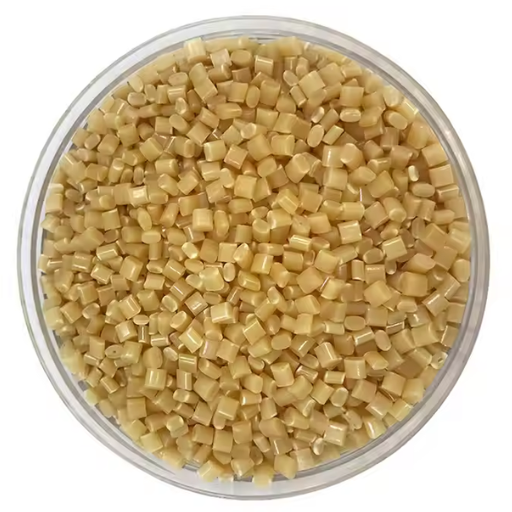
Copolymers improve the processability, impact resistance, and thermal stability of PPO. With specific comonomers, the brittleness of PPO is reduced, leading to improved performance in industrial applications. Furthermore, copolymerization enables key characteristics to be tuned, such as lowering the glass transition temperature, which makes molding and manufacturing easier. This enhances the versatility of PPO copolymers for various engineering applications.
Understanding block copolymer structures
Block copolymers are macromolecules made of two or more heterogeneous polymer segments joined together covalently. Different morphologies, such as spheres, cylinders, lamellae, or gyroids, can be formed from these self-assembled macromolecules due to the unique architecture of their block composition, temperature, and molecular weight ratio. These self-assembled structures are governed by the Flory-Huggins interaction parameter (χ) and the degree of polymerization (N), which together determine the microphase separation window.
Enhancing mechanical properties through copolymer integration
The use of copolymers in copolymer blends is one of the advanced methodologies used to improve the mechanical properties, such as tensile strength, elongation, and impact resistance. Engineers using block or graft copolymers can achieve better phase compatibility at the molecular level, which is necessary for optimizing stress concentration and producing more uniform materials. For example, the specific applications of certain block copolymers, such as styrene-butadiene-styrene (SBS) triblock copolymers, show significant improvements in toughness and elasticity and are widely used in adhesives and thermoplastic elastomers. Furthermore, the molecular design of copolymer segments that governs mechanical behaviors is mainly determined by the molecular weight of the architecture, the chain length distribution of the architecture, and the spatial position of the copolymer segments.
Comparing PPO with traditional polymers
Significant differences arise when polyphenylene oxide (PPO) is placed alongside traditional polymers in terms of mechanical properties and thermal stability, as PPO exhibits exceptional dimensional stability. PPO showcases remarkable stiffness and maintains its shape even at elevated temperatures. This is due to its aromatic backbone structure. This property is also why PPO is considered superior to polyethylene and polypropylene, which easily deform and lose mechanical strength due to heat. In addition, PPO also demonstrates low moisture absorption, which improves its effectiveness in use case scenarios where there is high environmental exposure, such as in fluid handling systems and electrical insulation. Though widely accepted and cost-effective, traditional polymers often rely on fillers or reinforcements to achieve the properties provided by PPO. These differences make PPO ideal for demanding engineering applications where mechanical and thermal aspects are crucial.
How does plastic waste relate to PPO and its hydrophilic properties?

The intersection of sustainability and materials science reveals a complex problem with plastic waste and polyphenylene oxide (PPO). PPO’s hydrophobic nature makes it resistant to water absorption and degradation, meaning it is less likely to break down in oceanic or freshwater bodies. While this water resistance enhances the durability of PPO, it also ensures that plastics made with PPO will persist in the ecosystem if not appropriately managed or recycled. Solving the problems associated with plastic waste involves creating effective recycling and repurposing systems tailored for engineering polymers like PPO to mitigate their ecological footprint.
Environmental impact of plastic waste
Plastic waste, a detrimental issue for ecosystems, animals, and humans, is tough to decompose, ubiquitous, and persistent. Current data suggest that roughly 400 million tons of plastic are produced globally each year, with almost half of it intended for single-use purposes. It is estimated that only 9% of the plastic is recycled, which means the rest accumulates in dumps, natural habitats, and water bodies. Not only is plastic hazardous to the environment, but microplastics are also a concern, which are formed from the breakdown of larger pieces of plastic. Microplastics have been found in marine life, soil, and even air. These particles pose a danger to marine animals through entanglement and consumption, which in turn poses a hazard for humans as the pollutants make their way through the food chain. Crafting solutions to these issues requires innovation in creating policies that foster economic growth and improving global recycling frameworks.
Recycling potential of PPO plastics
PPO (Polyphenylene Oxide) is deemed a thermoplastic due to its high resistance to thermal energy, mechanical force, and chemical assaults. Their distinct recovery challenges and prospects stem from the altered molecular structure, which is enabled by performance-enhancing fillers or reinforcements in the form of additives or shielding materials.
Recent changes in recycling technologies, such as chemical recycling and compatibilizers, have improved the recovery of PPO from end-of-life products. Chemical recycling processes, also known as chemical deconstruction, involve breaking down PPO polymer into monomers or minor constituents, which can then be used to create new high-performance materials. Additionally, blending PPO with other recyclable thermoplastics has been beneficial for preserving material properties and enhancing processing efficiency.
To fully leverage the potential of recycling technology for PPO plastics, there is a need for sophisticated sorting and processing frameworks for thermoplastics. Likewise, adopting specific procedures for product design that focus on PPO, coupled with more inter-industrial relations, will give these materials a forward-thinking approach to dealing with their sustainable life cycles.
Sustainable practices in polymer development
Technological progress in recycling has further underscored the need for more sustainable approaches to polymer design and synthesis. One notable advancement is the development of chemical recycling, which converts polymers back to their monomeric constituents to recover the materials of high purity. With the ability to mechanically recycle using traditional methods, this method is beneficial for bulky mixes and contaminated polymer streams. Non-selective thermal decomposition, pyrolysis, and solvolysis are emerging as effective and scalable techniques for mixed plastic waste.
One such development is the implementation of closed-loop systems where manufacturers create polymers with built-in recyclability features. These systems focus on the use of mono-materials, unambiguous markings, and modular structures that facilitate product disassembly and sorting. In addition, ongoing work on bio-based polymers derived from renewable resources, such as algae or agricultural waste, is promising for further reducing fossil fuel dependency and carbon emissions.
To make further progress towards sustainability, collaboration across academic, business, and governmental sectors is essential for creating unified guidelines, sponsoring broad efforts, and fostering cutting-edge solutions. If such approaches are prioritized, the polymer industry will further mitigate its environmental footprint and progress towards a circular economy.
What are the physicochemical properties of PPO in aqueous solutions?

PPO has poor solubility in aqueous solutions owing to its hydrophobic polymer backbone, which restricts interaction with water molecules, as well as its thermal stability and resistance to hydrolysis. Nonetheless, PPO can be surfactant-modified or chemically altered to increase dispersibility in water. Despite water incompatibility, PPO’s resistance to chemicals and mechanical stress under diverse conditions makes it durable for a wide range of applications.
Water uptake and water content analysis
Water uptake refers to the measurable amount of water that a material absorbs when placed in a humid environment or immersed in water. Water content, on the other hand, refers to the measurement of water within the material. Evaluation of these parameters is essential for studying the application-specific performance and durability of polymers such as PPO.
Gravimetric analysis, dynamic vapor sorption (DVS), and Karl Fischer titration techniques are routinely used to determine the degree of water uptake and water content, as water is essential for most chemical processes in materials science. For example, in gravimetric analysis, a sample is dried, and its weight is tracked over time as it is exposed to moisture, allowing for the direct quantification of water absorption. In dynamic vapor sorption, the sample can be subjected to varying humidity levels, allowing for real-time monitoring of weight changes. For the best determination of trace water content, Karl Fischer titration is widely regarded as one of the most accurate methods available, allowing quantification in the parts per million range.
Phase separation in polymer membranes
In polymer membranes, phase separation is one of the phenomena that critically impact the structural and functional properties of the resultant material. This step usually occurs during fabrication processes, such as immersion precipitation, solvent evaporation, or thermally induced phase separation. The resulting separation gives rise to distinct phases within the polymer, that is, rich and poor, which is responsible for defining the membranes in terms of porosity, permeability, and mechanical strength.
Furthermore, advances in controlling non-solvent additives and co-solvent systems have enabled the fabrication of membranes with asymmetric structures or other highly specialized attributes, such as gradient porosity. The level of control over phase separation and morphology has advanced the development of sophisticated membranes designed for water purification, gas separation, and other biomedical device applications.
Effects of molecular weight on water absorption
In terms of the water absorption capacity of a polymer, its molecular weight plays a critical role due to its influence on the polymer’s chain mobility, crystallinity, and free volume. Polymers with lower molecular weights usually have a greater degree of flexibility in their chains, which increases free volume and the ability of water molecules to permeate the material’s structure. However, polymers with higher molecular weights exhibit lower flexibility and more entangled chains, which decreases the water’s availability.
In addition, functional groups like hydroxyl (-OH) or carboxyl (-COOH) and the molecular weight can also affect the hydrophilicity and water retention properties. For example, the equilibrium water absorption in some hydrogels is shown to decrease with increased molecular weight due to reduced swelling capability. All of these reasons suggest that molecular weight parameters need to be customized during the synthesis process to achieve optimal water absorption features, particularly for biomedical devices, membranes, and packaging materials.
Reference Sources
-
- Key Findings: PPO is inherently hydrophobic due to its phenyl groups. However, PPO-based membranes can transmit small molecules like water in vacuum pervaporation. The study highlights that modifying PPO with graphene oxide (GO) enhances its hydrophilic properties, as indicated by reduced water contact angles and increased water swelling.
- Methodology: The research involved modifying PPO with varying concentrations of GO, followed by structural and physicochemical analyses (e.g., FTIR, SEM, AFM, and contact angle measurements) to evaluate changes in hydrophilic properties.
-
Self-assembly generation triggered in highly hydrophilic Pluronics® by sugars/polyols
- Key Findings: This study focuses on hydrophilic block copolymers, including PPO-based systems, and their behavior in aqueous solutions. It notes that hydrophilic additives, such as sugars and polyols, can enhance water interactions and promote micellization, indirectly suggesting PPO’s potential for hydrophilic modification.
- Methodology: The study used dynamic light scattering (DLS) and small-angle neutron scattering (SANS) to investigate the effects of additives on the self-assembly and hydration properties of hydrophilic block copolymers.
- Top PPO Plastic Pellets Suppliers in China
Frequently Asked Questions
Q: What are the hydrophilic characteristics of PPO plastic?
A: PPO plastic exhibits hydrophilic characteristics due to the presence of hydrophilic segments in its polymer structure, which enhance its interaction with water and increase its swelling ratio when in contact with pure water.
Q: How is PPO plastic prepared and what is it characterized by?
A: PPO plastic is prepared via various methods, including the use of hydrophilic monomers and composite techniques. The characterization of PPO involves techniques such as FTIR and NMR to analyze its chemical structure and properties of the membranes produced.
Q: What is the significance of the glass transition temperature in PPO membranes?
A: The glass transition temperature of PPO membranes is crucial as it affects the flexibility and performance of the membranes at different temperatures, influencing their practical application in environments with high or low temperatures.
Q: How does the surface morphology of PPO membranes affect their properties?
A: The surface morphology of PPO membranes influences their hydrophilic and hydrophobic balance, impacting properties such as gas permeability and electrical properties, which are essential for applications in fuel cell membranes.
Q: What role do hydrophilic monomers play in the preparation of PPO membranes?
A: Hydrophilic monomers are used to modify the polymer matrix of PPO, enhancing the hydrophilic characteristics and improving the performance of the membranes in applications such as anion exchange membrane fuel cells.
Q: Can PPO membranes be used in high-temperature applications?
A: Yes, PPO membranes can be tailored for high-temperature applications by adjusting their polymer structure and incorporating hydrophobic segments, which help maintain their performance under elevated temperatures.
Q: What are mixed matrix membranes in the context of PPO plastic?
A: Mixed matrix membranes are composite structures that incorporate PPO with other materials to enhance specific properties, such as gas permeability and tensile strength, making them suitable for advanced applications like fuel cells.
Q: How are the electrical properties of PPO membranes evaluated?
A: The electrical properties of PPO membranes are evaluated through techniques such as dielectric measurements and analysis of their performance under UV light, which reveal how well they conduct electricity in various conditions.
Q: What is the impact of PPO’s swelling ratio on its application in membranes?
A: The swelling ratio of PPO membranes affects their structural integrity and permeability, which are critical factors for their effectiveness in applications such as alkaline fuel cells and other membrane technologies.
Q: How do the results show the performance of PPO membranes in fuel cell applications?
A: The results show that PPO membranes, especially when modified with hydrophilic segments, demonstrate improved performance in fuel cell applications by enhancing conductivity and reducing resistance, thereby increasing efficiency.

